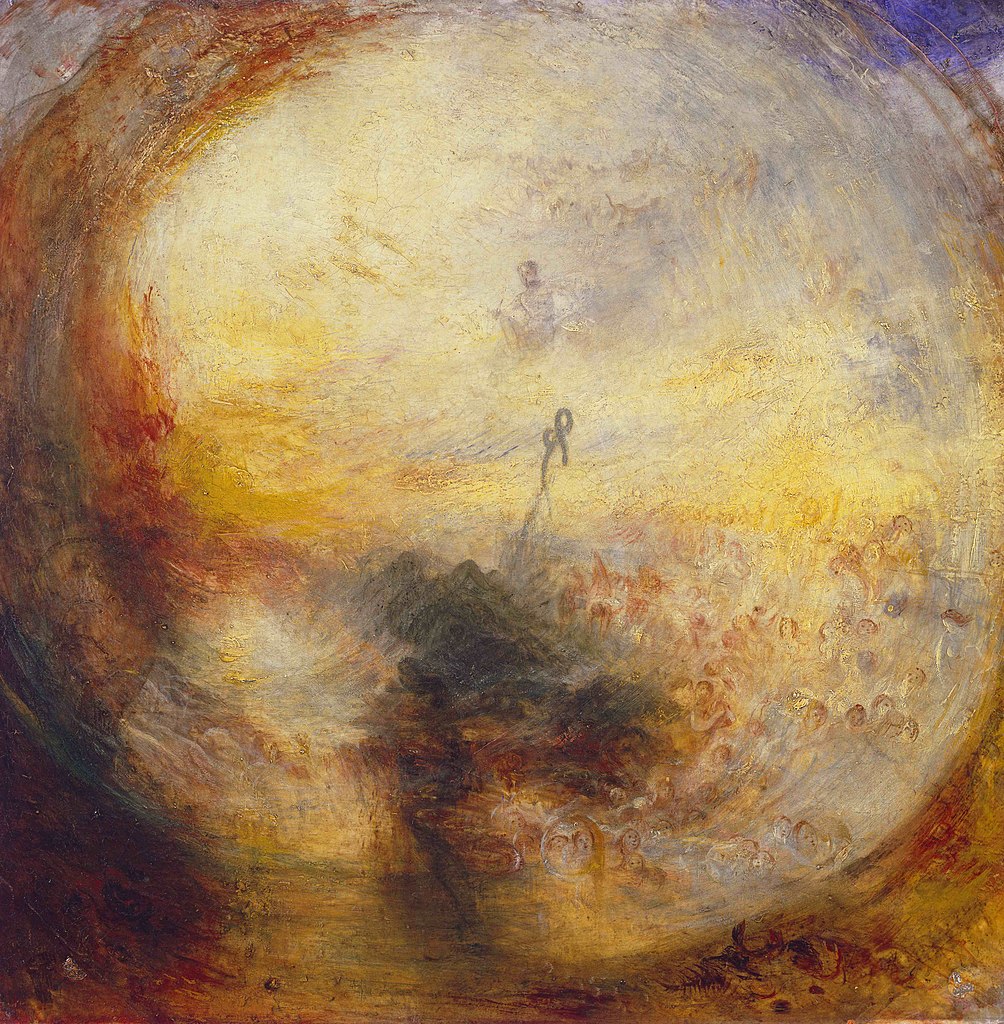Light and Colour by J.M.W. Turner, Genesis 8:1-5, Bible.Gallery
Artwork Description

Made during the latter years of Turner's career, this painting depicts the aftermath of the Great flood story told in the Book of Genesis. The role of man is portrayed as passive through his inability to control nature, which is beautiful to the eye yet has the power to destroy and recreate life. This piece also illustrates Turner's belief in God's omnipotence as it is He who creates the flood, allows Noah to survive, and inspired Moses to write the Book of Genesis. Genesis, in this case leads back to the creation of man, light, and the water which light is being reflected on.
As expressed in the title of the painting, Turner found interest in Johann Wolfgang Von Goethe's book, Theory of Colours also known as Zur Farbenlehre, published in 1810. Turner absorbed Goethe's theory of light and darkness and depicted their relationship in a number of his paintings. According to this theory, the creation of colour is dependent on the distribution of dark and light reflecting through a transparent object. Turner uses concepts from Goethe's theory, which is a rejection of Newton's Seven Color Theory, and expresses the belief that every colour was an individualised combination of light and darkness. Newton's reasoning in his theory of light and colour was, in the words of Michael Duck, too simplistic for Goethe. As a result, Goethe found his own form of vision in regards to the physiological aspects of the concept of colour. As a result, Goethe claims that there is an infinite amount of colour variation, and through his paintings Turner attempts to reflect this theory. Turner also responds to the plus and minus concepts that Goethe created to address both emotions and the eye. His main focus was the afterimage that is left on the retina after seeing an image. Through this after image the plus addresses the colours red and yellow which is intended to evoke a buoyant feelings, while the colour blue contrasts such as it creates the emotion of melancholy and desolation. According to Goethe's concept, yellow undergoes a transition of light becoming darker when light reaches its peak, just as the Sun shines in the sky, it develops to a white light that is colourless. But the light deepens and evolves the yellow into an orange and then finally to a ruby red hue. Turner illustrates the process of yellow transitioning into phases of light by showing how, as the viewer moves away from the centre, the edges get darker.